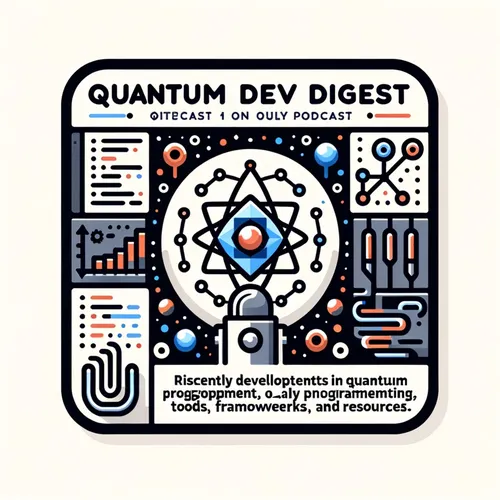Fujitsu's 10,000-Qubit Leap and the Quantum Mood Ring: This Week's Breakthroughs
- Author
- Quiet. Please
- Published
- Sun 03 Aug 2025
- Episode Link
- https://www.spreaker.com/episode/fujitsu-s-10-000-qubit-leap-and-the-quantum-mood-ring-this-week-s-breakthroughs--67237259
This is your Quantum Dev Digest podcast.
What if we could peer inside a computer so advanced it could find a single speck in a sea of sand—instantly? This week, news from Fujitsu and a Franco-Cambridge research group jolted the quantum computing world, and I, Leo—your Learning Enhanced Operator—am rushing the story straight from the lab floor.
Let’s dive right in. On August 1, Fujitsu made headlines announcing work on a superconducting quantum computer designed to exceed 10,000 qubits, with strategic partners AIST and RIKEN. Think about it: classical supercomputers check through possible solutions one at a time—like browsing every book in a mega-library. But a machine built on 10,000 quantum qubits? That’s like peering at every book, every page, all at once, before the librarian’s even greeted you. Their “STAR architecture” promises early-stage fault tolerance, the missing link that could make quantum not just powerful but highly usable for real-world industries, starting in materials science and beyond. The fact that Fujitsu plans for 250 logical qubits—powerful, error-resistant groupings—by 2030, and even aims to cross architectures with diamond spin qubits, tells you the quantum era is no sci-fi fantasy—it’s unfolding on a strict schedule right now.
But there’s another discovery that’s captivating my quantum senses. This week, researchers from Cambridge and Paris-Saclay unveiled in Nature Chemistry a carbon-based molecule that links the spin of an electron—its “quantum twirl”—directly to light. Imagine a magic bead that glows orange if its inner spinning electrons are aligned one way, and shifts to deep infrared if they flip. This is more than just mesmerizing colors: it provides a simple, direct readout of quantum information, potentially eliminating the bulky sensors usually needed for quantum machines. In quantum terms, this is like having a mood ring for subatomic particles—intimate, immediate, and transformative for quantum sensing.
Let me clarify why these developments matter in your daily life. Quantum computers, especially fault-tolerant ones, are not just “faster computers.” They’re specialized solvers for problems classical machines can never untangle—cryptography, logistics, drug discovery—any task with mind-bending complexity. What’s happening this week isn’t just a boost in raw numbers; it’s a revolution in the reliability and usability of quantum systems, quietly bringing the theoretical into the hands of engineers, designers, and everyday users.
So, next time you marvel at how overnight shipping finds its way through tangled cities, or wonder how future medicines will emerge from nature’s puzzles, remember: quantum breakthroughs this week are rewriting the rules behind the scenes.
I’m Leo. If you have burning questions or want your favorite quantum quandaries featured on Quantum Dev Digest, email me anytime at [email protected]. Subscribe now, and keep tuning into this quantum revolution. This has been a Quiet Please Production—for more info, check out quietplease.ai.
For more http://www.quietplease.ai
Get the best deals https://amzn.to/3ODvOta
